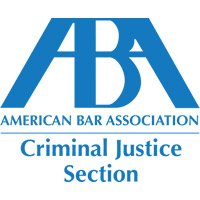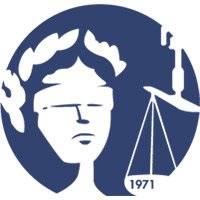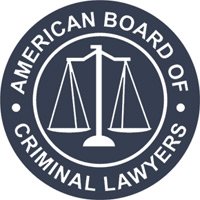PROBLEMS REGARDING GRAND JURY SUBPOENAS
Chronologically, the first problem that may arise regarding grand jury proceedings often concerns the subpoena itself. Recurring problems include:
PLACE TO APPEAR
FED. R. CRIM. PRO. Rule 17 “…does not authorize the Government or the defense to subpoena a witness and require him to report at some time or place other than where the hearing is to be held at which he is to testify”. Durkin v. U.S., 221 F.2d 520, 522 (D.C. Cir. 1954); U.S. v. Standard Oil Co., 316 F.2d 884, 897 (7th Cir. 1963); U.S. v. Keen, 509 F.2d 1273 (6th Cir. 1975); WRIGHT, FEDERAL PRACTICE AND PROCEDURE: CRIMINAL §273 at 546-47; 4A BENDER’S FEDERAL PRACTICE FORM 316 n.1;
See also U.S. v. Thomas, 320 F.2d 527 (D.C. Cir. 1970);
U.S. v. Chin Lim Mow, 12 F.R.D. 433 (N.D. Cal. 1952);
U.S. v. Hedge, 462 F.2d 220, 222-23 (5th Cir. 1972);
Buie v. U.S., 420 F.2d 1207 (5th Cir. 1969);
U.S. v. Johnson-Manville Corp., 213 F. Supp. 65 (E.D. Pa. 1962) (suggesting disciplinary action against the U.S. Attorney as a means of correcting such practice of abusing the grand jury subpoena);
U.S. v. Stirone, 158 F. Supp. 490, 497 (W.D. Pa. 1957), aff’d, 262 F.2d
571 (3d Cir. 1958), rev’d on other grounds, 361 U.S. 212 (1960) (noting the Court’s “disapproval” of the Government’s practice of issuing subpoenas commanding the appearance of witnesses to testify at “the offices of the United States Attorney” even if only for purpose of collecting witness fee);
In re: Grand Jury Subpoena (Thomas P. Lauterstein), No. 76-188 (W.D. Tex. 1976) (granting the Motion to Quash, the Court notes its “disapproval” of such practice, ordering that future subpoenas issue only for the “Clerk’s Office or the Grand Jury Room”);
Durbin v. U.S., 221 F.2d 520, 521 (D.C. Cir. 1954) (stating neither the Constitution, the statutes nor the deep rooted “traditions of our law” recognize “the United States Attorney’s Office as a proper substitute for the Grand Jury Room” holding that it was “clearly an improper use of the District court’s process for the U.S. Attorney to issue a subpoena returnable to his office”).
In addition, the subpoenaed documents must be delivered to the grand jury and not to the government attorneys. The problem is cured if the attorneys subsequently transfer the documents to the grand jury. However, if this is not done, the proper sanction is contempt. U.S. v. Kington, 801 F.2d 733 (5th Cir. 1986).
Where a prosecutor issues a grand jury subpoena on his own initiative without any ongoing grand jury investigation in progress, the target of the subpoena may immediately appeal the district court’s denial of a motion to quash. In re Grand Jury Subpoena Duces Tecum, 725 F.2d 1110 (7th Cir. 1984); Cf. In re Grand Jury Proceedings (Kelly), 491
- Supp. 211 (D.D.C. 1980);
“The subpoena at issue here commanded Mr. Cardin. . . to room #2124 in this courthouse. Though room #2124 is not identified in the subpoena, it is in fact an office of the U.S. Attorney. On the face of it, this would appear to be a misuse of the subpoena power. Subpoenas under Rule 17 are for the purpose of compelling witnesses to appear at the “time and place” of the grand jury and for no other purpose. But as the record in this case now stands, this court has no basis to hold that the subpoena amounts to an abuse of grand jury process. According to the statements of government counsel at oral argument, the use of an office of the United States Attorney as a “check-in” point for witnesses serves two purposes. It allows for the witness to be directed to the room in which the grand jury is located, a logistical factor often not known at the time the subpoena is issued. It also allows the government attorneys to interview the witness, identify the nature of the proposed testimony or documentary submissions, and use this information to prepare an orderly presentation before the grand jury. Government counsel emphasized that these interviews are consensual; no witness is obligated to speak to a government attorney prior to appearing before the grand jury.” In re Grand Jury Proceedings (Kelly), 491 F. Supp. 211 (D.D.C. 1980).
Likewise, it has been held that a prosecutor may not give blank subpoenas to Federal Agents to complete, although the prosecutor himself would have been entitled to do so. In re Grand Jury Proceedings, 593 F. Supp. 92 (S.D. Fla. 1984).
SPECIFICITY IN SUBPOENA IS NOT REQUIRED
There is no requirement that grand jury subpoenas state the subject matter of the investigation, or cite the statute that gave the grand jury authority to convene. See In re Grand Jury Proceedings, 514 F. Supp. 90 (E.D. Pa. 1981).
SERVICE OF GRAND JURY SUBPOENA
It has been held that service of a grand jury subpoena must be “personal”, or the subpoena will be quashed. U.S. v. Davenport, 312 F.2d 303 (7th Cir. 1943), cert. denied, 320 U.S. 760. However, failure to move to quash the subpoena for defective service or form may constitute waiver. In re Meckley, 137 F.2d 310 (3d Cir. 1943), cert. denied, 320 U.S. 760.
WHO MAY BE SUBPOENAED?
“Targets” of Investigations
The current U.S. ATTORNEY MANUAL, § 9-11.251 provides that:
- “targets” of a grand jury investigation should not be subpoenaed,
- if subpoenaed they should be notified of their status as “targets”, and
- upon written assertion of their intent to invoke the privilege against self-incrimination a “target” should be excused.
Lawyers
The ABA House of Delegates has added a paragraph to Rule 3.8 of the ABA’s Model Rules of Professional Conduct. The paragraph forbids prosecutors from seeking grand jury subpoenas of attorney’s except in specified circumstances.
WHERE GOVERNMENT REFUSES TO FOLLOW INTERNAL GUIDELINES
In the event Government Counsel refuses to follow their own guidelines and insists upon calling the “target” of an investigation before the Grand Jury a claim may be made under the “Accardi Doctrine,” that, having proscribed such valid regulations for the benefit of the individual, the Government must follow them.
U.S. ex rel Accardi v. Shaughnessy, 347 U.S. 260, 267-68 (1975);
Service v. Dulles, 354 U.S. 363, 372 (1957);
Morton v. Ruiz, 415 U.S. 199 (1974);
School Board of Broward County v. HEW, 525 F.2d 900, 908 (5th Cir. 1976). “Where the rights of individuals are affected it is incumbent
upon agencies to follow their own procedures. This is so even where internal procedures are possibly more rigorous than otherwise would be required.” Morton v. Ruiz, 415 U.S. at 235.
U.S. v. Jacobs, 547 F.2d 772, 774 (2d Cir. 1976) (applying the “Accardi Doctrine” to Justice Department Guidelines). Morton v. Ruiz, 415 U.S. at 235.
“The Attorney General has promulgated guidelines governing interrelationships between Strike Forces and United States Attorney’s Offices. . . . we think that this prescribed direction by the United States Attorney applies to this case. . . .
We did not [in an earlier opinion] specifically refer to the analogy of an agency being required to adhere to its own regulations, Service v. Dulles, 354 U.S. 363, 732 (1957), because we recognized that the Attorney general in his prosecutorial function may be, strictly speaking, less restricted than the Secretary of State. However, the analogy is persuasive when the Attorney General actually promulgates Guidelines for supervision by the United States Attorney in specific circumstances, see United States v. Leahey, 434 F.2d 7 (1st Cir. 1970); United States v. Heffner, 420 F.2d 809 (4th Cir. 1969) (non-constitutional ground), and inconsistent treatment results therefrom.” Morton v. Ruiz, 415 U.S. at 235.
With regard to following their own guidelines explaining petit policies at least one court has held that:
“The Fifth Amendment does not require that the prosecution present information concerning a prior State prosecution and conviction and the government’s petite policy to the grand jury when presenting a charge that has been the subject of a previous State prosecution.” U.S. v. Hyder, 732 F.2d 841, 845 (11th Cir. 1984).
SUBPOENA DUCES TECUM: ITEMS SOUGHT MUST BE ADEQUATELY DESCRIBED
Subpoenas duces tecum must not be “unreasonable and oppressive,” Fed. R. Crim. Pro. 17, rather they must identify and describe the items sought with particularity. U.S. v. Komisaruk, 885 F.2d 490 (9th Cir. 1989).
U.S. v. Morton Salt Co., 338 U.S. 632 (1958);
Oklahoma Press Publishing Co. v. Walling, 327 U.S. 186 (1946);
In re Grand Jury Proceedings (McCoy), 601 F.2d 162 (5th Cir. 1979).
“OPPRESSIVENESS”, NOT “RELEVANCY”, IS THE TEST
The Supreme Court has held that the U.S. v. Nixon enforcement of Rule 17 trial subpoenas, requiring the Government to demonstrate that the evidence sought is relevant, admissible and specific, is not applicable to a subpoena in the grand jury context. See
U.S. v. Nixon, 418 U.S. 683, 699-700 (1974). See also U.S. v. R. Enterprises, Inc., 498
U.S. 292 (1991). Since the purpose of the grand jury is to find out if there is enough information in the first place, to begin an investigation.
“The grand jury occupies a unique role in our criminal justice system. It is an investigatory body charged with the responsibility of determining whether or not a crime has been committed. Unlike this Court, whose jurisdiction is predicated on a specific case or controversy, the grand jury ‘can investigate merely on suspicion that the law is being violated, or even just because it wants assurance that it is not’. …The function of the grand jury is to inquire into all information that might possibly bear on its investigation until it has identified an offense or has satisfied itself that none has occurred. As a necessary consequence of its investigatory function, the grand jury paints with a broad brush. . . .
A grand jury subpoena is thus much different from a subpoena issued in the context of a prospective criminal trial, where a specific offense has been identified and a particular defendant charged…. In short, the Government cannot be required to justify the issuance of a grand jury subpoena by presenting evidence sufficient to establish probable cause because the very purpose of requesting the information is to ascertain whether probable cause exists.” U.S. v. R. Enterprises, Inc., 498 U.S. 292, 297 (1991).
However, In R. Enterprises, the Supreme Court did recognize that where a challenge to the subpoenas “reasonableness” is raised, a court may require the Government to first reveal the “‘general subject of the grand jury’s investigation”, prior to requiring the accused to demonstrate its unreasonableness. U.S. v. R. Enterprises, Inc., 498 U.S. 292 (1991). “It seems unlikely, of course, that a challenging party who does not know the general subject matter of the grand jury’s investigation, no matter how valid that party’s claim, will be able to make the necessary showing that compliance would be unreasonable. . . . Consequently, a court may be justified in a case where unreasonableness is alleged in requiring the Government to reveal the general subject of the grand jury’s investigation before requiring the challenging party to carry its burden of persuasion.” In addition the subpoenaed documents must be delivered to the grand jury and not to the government attorneys. The problem is cured if the attorneys subsequently transfer the documents to the grand jury. However, if this is not done, the proper sanction is contempt.” U.S. v. R. Enterprises, Inc., 498 U.S. 292 (1991).
RULE 17 APPLICABLE IN PART TO GRAND JURY SUBPOENAS
The Supreme Court, however, did hold that FED. R. CRIM. PRO. Rule 17(c), governing subpoenas duces tecum in criminal proceedings, is applicable to grand jury subpoenas to the extent that it provides a remedy from requests that are “unreasonable or oppressive”.
“The investigatory powers of the grand jury are nevertheless not unlimited…Grand juries are not licensed to engage in arbitrary fishing expeditions, nor may they select targets of investigation out of malice or an intent to harass. In this case the focus of our inquiry is the limit imposed on a grand jury by Federal Rule of Criminal Procedure 17(c), which governs the issuance of subpoenas duces tecum in federal criminal proceedings. The Rule provides that ‘the court on motion made promptly may quash or modify the subpoena if compliance would be unreasonable or oppressive.”
The test is whether “there is no reasonable possibility that the category of materials the Government seeks will produce information relevant to the general subject of the grand jury’s investigation”.











